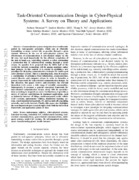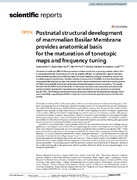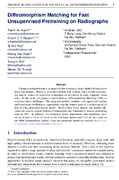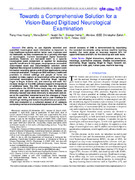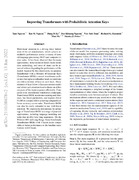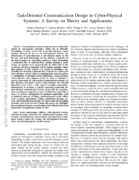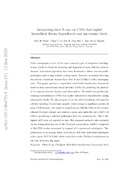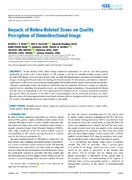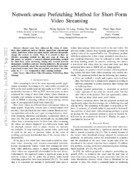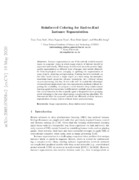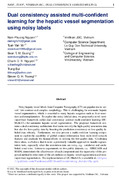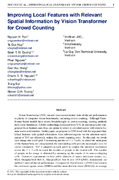The College of Engineering and Computer Science
Duyệt theo

Các bộ sưu tập trong đơn vị
-
Do Danh Cuong, PhD [3]
Assistant Professor, Electrical Engineering program, College of Engineering and Computer Science -
Do Tho Truong, PhD. [13]
Director, Mechanical Engineering program, College of Engineering and Computer Science -
Giuseppe Calafiore, PhD [2]
Professor of Mechanical Engineering; College of Engineering and Computer Science -
Journal Article [2]
-
Khoa D. Doan, PhD [4]
Assistant Professor of Computer Science, College of Engineering and Computer Science -
Kok-Seng Wong, PhD [19]
Associate Professor, Computer Science program, College of Engineering and Computer Science -
Le Duy Dung, PhD [5]
Assistant Professor, Computer Science program, College of Engineering and Computer Science -
Le Van Quynh, Asst. Prof., PhD. [4]
Assistant Professor, Electrical Engineering program, College of Engineering and Computer Science -
Minh Do, PhD. [7]
Honorary Vice Provost -
Nguyen Do Trung Chanh, PhD [11]
Model Development Manager - College of Engineering and Computer Science -
Nguyen Van Dinh, PhD. [15]
College of Engineering and Computer Science; Assistant Professor, Electrical Engineering program -
Nguyen Van Thang, PhD [1]
Applied Scientist Engineering; College of Engineering and Computer Science -
Nidal Kamel, PhD. [4]
College of Engineering and Computer Science; Associate Professor, Electrical Engineering program -
Pham Huy Hieu, PhD. [36]
College of Engineering and Computer Science Associate Director, VinUni-Illinois Smart Health Center Assistant Professor, Computer Science program -
Pham Ngoc Nam, PhD [31]
Vice Dean, College of Engineering and Computer Science - Director, Electrical Engineering program, College of Engineering and Computer Science -
Thai Mai Thanh, PhD. [2]
College of Engineering and Computer Science - Assistant Professor, Mechanical Engineering program -
Tran Minh Quan [10]
Applied Scientist Engineering - College of Engineering and Computer Science -
Tran Thi Mai, PhD [10]
Assistant Professor - College of Engineering and Computer Science -
Wray Buntine, PhD. [13]
College of Engineering and Computer Science Director, Computer Science program
Các tài liệu mới cập nhật
-
Task-oriented communication design in cyber-physical systems: a survey on theory and applications
(2023-05)Communication system design has been traditionally guided by task-agnostic principles, which aim at efficiently transmitting as many correct bits as possible through a given channel. However, in the era of cyber-physical ... -
Enhancing few-shot image classification with cosine transformer
(2023-07)This paper addresses the few-shot image classification problem, where the classification task is performed on unlabeled query samples given a small amount of labeled support samples only. One major challenge of the few-shot ... -
FedGrad: Mitigating backdoor attacks in federated learning through local ultimate gradients inspection
(2023)Federated learning (FL) enables multiple clients to train a model without compromising sensitive data. The decentralized nature of FL makes it susceptible to adversarial attacks, especially backdoor insertion during training. ... -
From nature to additive manufacturing: biomimicry of porcupine quill
(2021-08-14)A porcupine’s quill is an extraordinary natural armor capable of withstanding high compression load. By unravelling the unique properties of the porcupine quill design, the bioinspired structures can be applied in engineering ... -
Impacts of retina-related zones on quality perception of omnidirectional image
(2019-11)Virtual Reality (VR), which brings immersive experiences to viewers, has been gaining popularity in recent years. A key feature in VR systems is the use of omnidirectional content, which provides 360-degree views of scenes. ... -
Machine learning for the detection of social anxiety disorder using effective connectivity and graph theory measures
(2023-05)Introduction: The early diagnosis and classification of social anxiety disorder (SAD) are crucial clinical support tasks for medical practitioners in designing patient treatment programs to better supervise the progression ... -
Postnatal structural development of mammalian basilar membrane provides anatomical basis for the maturation of tonotopic maps and frequency tuning
(2021)The basilar membrane (BM) of the mammalian cochlea constitutes a spiraling acellular ribbon that is intimately attached to the organ of Corti. Its graded stiffness, increasing from apex to the base of the cochlea, provides ... -
Interpreting chest X-rays via CNNs that exploit hierarchical disease dependencies and uncertainty labels
(2020-06)Chest radiography is one of the most common types of diagnostic radiology exams, which is critical for screening and diagnosis of many different thoracic diseases. Specialized algorithms have been developed to detect several ... -
Diffeomorphism matching for fast unsupervised pretraining on radiographs
(2020)Unsupervised pretraining is an approach that leverages a large unlabeled data pool to learn data features. However, it requires billion-scale datasets and a month-long training time to surpass its supervised counterpart ... -
Towards a comprehensive solution for a vision-based digitized neurological examination
(2022-08)The ability to use digitally recorded and quantified neurological exam information is important to help healthcare systems deliver better care, in-person and via telehealth, as they compensate for a growing shortage of ... -
Engineering a light–matter strong coupling regime in perovskite-based plasmonic metasurface: quasi-bound state in the continuum and exceptional points
(2020-12-14)We present theoretically the formation of exciton-photon polaritons and exciton-surface plasmon polaritons in perovskite-based subwavelength lattice on metallic plane. It is showed that the later polaritons will be achieved ... -
Improving transformers with probabilistic attention keys
(2022-06-13)Multi-head attention is a driving force behind state-of-the-art transformers, which achieve remarkable performance across a variety of natural language processing (NLP) and computer vision tasks. It has been observed that ... -
Task-oriented communication design in cyber-physical systems: A survey on theory and applications
(2023-05-25)Communication system design has been traditionally guided by task-agnostic principles, which aim at efficiently transmitting as many correct bits as possible through a given channel. However, in the era of cyber-physical ... -
Phase recognition in contrast-enhanced CT scans based on deep learning and random sampling
(2022-03-20)Purpose: A fully automated system for interpreting abdominal computed tomography (CT) scans with multiple phases of contrast enhancement requires an accurate classification of the phases. Current approaches to classify the ... -
Interpreting chest X-rays via CNNs that exploit hierarchical disease dependencies and uncertainty labels
(2020-06-12)Chest radiography is one of the most common types of diagnostic radiology exams, which is critical for screening and diagnosis of many different thoracic diseases. Specialized algorithms have been developed to detect several ... -
Impacts of retina-related zones on quality perception of omnidirectional image
(2019-11-18)Virtual Reality (VR), which brings immersive experiences to viewers, has been gaining popularity in recent years. A key feature in VR systems is the use of omnidirectional content, which provides 360-degree views of scenes. ... -
Network-aware prefetching method for short-form video streaming
(2022-09-07)Recent years have witnessed the rising of short-form video platforms such as TikTok. Apart from conventional videos, short-form videos are much shorter and users frequently change the content to watch. Thus, it is crucial ... -
Reinforced coloring for end-to-end instance segmentation
(2020-05-19)Instance segmentation is one of the actively studied research topics in computer vision in which many objects of interest should be separated individually. While many feed-forward networks produce high-quality segmentation ... -
Dual consistency assisted multi-confident learning for the hepatic vessel segmentation using noisy labels
(2022)Noisy hepatic vessel labels from Computer Tomography (CT) are popular due to vessels’ low-contrast and complex morphology. This is challenging for automatic hepatic vessel segmentation, which is essential to many hepatic ... -
Improving local features with relevant spatial information by vision transformer for crowd counting
(2022)Vision Transformer (ViT) variants have demonstrated state-of-the-art performances in plenty of computer vision benchmarks, including crowd counting. Although Transformer-based models have shown breakthroughs in crowd ...

